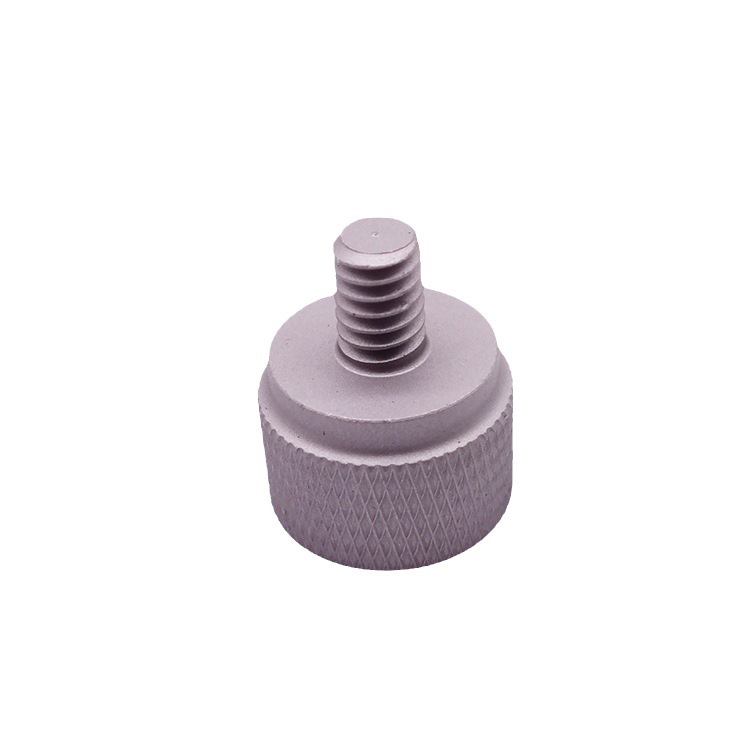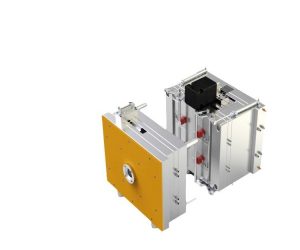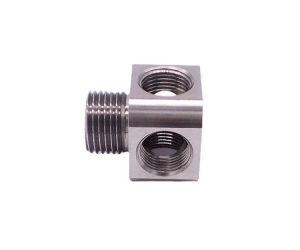Check this out tooling is flipping the manufacturing game on its head. It’s all about speed and precision, making it possible for companies to innovate faster and more efficiently. This tech is changing the game across a bunch of different sectors, letting manufacturers push boundaries like never before.
I. The Genesis of Accelerated Tooling and the DRT Revolution
A. A History of Disruption: The relentless march of industrial progress has consistently demanded accelerated production cycles and heightened precision. This pressure cooker environment has fueled the evolution of rapid tooling, a field marked by iterative leaps forward. The culmination of this evolution is Direct Herramientación rápida (DRT), a transformative technology poised to fundamentally alter the manufacturing paradigm. DRT's emergence isn't merely incremental; it represents a paradigm shift, challenging established norms and unlocking unprecedented possibilities.
B. DRT: A Quantum Leap in Manufacturing Agility: DRT transcends the limitations of conventional tooling methodologies. It offers a dramatic acceleration in the creation of high-precision tools and molds, eliminating the protracted lead times inherent in traditional processes. This allows manufacturers to achieve previously unattainable levels of responsiveness to market fluctuations and rapidly iterate designs, fostering innovation at an exponential rate. The implications for product lifecycles and competitive advantage are profound.
C. Navigating the DRT Landscape: This exploration will dissect the multifaceted nature of DRT, examining its underlying principles, the cutting-edge technologies that underpin its efficacy, and its transformative applications across diverse industries. We will delve into the intricacies of material selection, the rigorous quality assurance protocols necessary for high-stakes applications, and the emerging considerations surrounding sustainability within the DRT ecosystem.
II. Deconstructing the DRT Methodology
A. A Taxonomy of Rapid Tooling: To fully grasp the significance of DRT, a contextual understanding of the broader rapid tooling landscape is crucial. This encompasses a diverse array of techniques – from CNC machining and electroforming to investment casting and various additive processes – each with its unique strengths and limitations. These antecedent technologies laid the groundwork for the revolutionary capabilities of DRT.
B. The DRT Operational Paradigm: DRT fundamentally reimagines the tool and mold creation process. It eschews the multi-stage, time-intensive methodologies of traditional tooling, instead leveraging advanced additive manufacturing (AM) technologies, such as selective laser sintering (SLS) and multi-jet fusion (MJF), to directly fabricate high-precision tooling components. This direct approach drastically reduces lead times and minimizes resource consumption, accelerating the entire product development lifecycle.
C. Efficiency and Precision: The DRT Advantage: The transformative impact of DRT stems from its unparalleled efficiency and precision. The streamlined workflow drastically reduces lead times, enhancing responsiveness to market demands and customer specifications. Furthermore, the inherent precision of AM technologies ensures tooling components meet the most stringent quality standards, enabling the production of complex parts with exceptional consistency and fidelity.
III. Technological Advancements and Refinements
A. Laser Sintering: The Engine of DRT: Laser sintering, a cornerstone of DRT, employs high-energy lasers to selectively fuse powdered materials, creating three-dimensional tooling components with exceptional accuracy and intricate detail. This technology has been instrumental in propelling the rapid advancement of DRT, empowering manufacturers to produce customized, high-performance tools and molds with unprecedented speed and efficiency. Ongoing research continues to refine laser sintering parameters for enhanced material properties and dimensional accuracy.
B. Impresión 3D: Expanding the DRT Horizon: Beyond laser sintering, 3D printing technologies, encompassing stereolithography (SLA), fused deposition modeling (FDM), and other advanced techniques, have significantly broadened the capabilities of DRT. These technologies unlock new design possibilities, facilitate experimentation with novel materials, and continually push the boundaries of what is achievable in rapid tooling.
C. Advanced Techniques for Unparalleled Precision: The DRT field is characterized by continuous innovation. Hybrid manufacturing approaches, combining additive and subtractive processes, are being increasingly employed to optimize tooling performance. Furthermore, advanced surface finishing and post-processing techniques are crucial in achieving the required surface quality and dimensional tolerances for demanding applications. These refinements are essential for ensuring the long-term durability and reliability of DRT-produced tools.
IV. Design Processes in Direct Rapid Tooling: A Fractal Approach to Optimization
A. Design Optimization: Navigating the Algorithmic Labyrinth
The efficacy of direct rapid tooling (DRT) hinges not merely on design quality, but on the intricate dance between design parameters and the inherent chaotic nature of additive manufacturing. Manufacturers must transcend simplistic considerations of geometry and material selection, embracing a holistic, iterative approach. This necessitates leveraging advanced CAD software, not as mere drafting tools, but as sophisticated computational engines capable of predicting and mitigating the emergent complexities arising from layer-by-layer deposition. The design process becomes a journey through a multi-dimensional design space, each iteration refining the solution, navigating the unpredictable landscape of material behavior and process limitations. Failure to account for these inherent uncertainties risks catastrophic outcomes, rendering the entire process economically and functionally infeasible.
B. Software Tools: Orchestrating the Digital Symphony
The DRT design process is not a solo performance, but a complex orchestration of specialized software. CAD/CAM tools serve as the conductors, seamlessly integrating additive manufacturing workflows. However, the true virtuosity lies in advanced simulation and analysis software, allowing for the virtual prototyping and stress-testing of tooling designs under extreme conditions. These digital tools are not merely supplementary; they are indispensable, transforming the DRT paradigm from a largely empirical process into a precisely controlled, data-driven endeavor. The software's ability to predict and model the stochasticity of the additive process is paramount to success.
C. Data Preparation and Management: Taming the Data Deluge
The foundation of successful DRT lies in the meticulous management of a vast and heterogeneous dataset. This encompasses not only 3D models, but also intricate material specifications, process parameters, and the ever-increasing volume of sensor data generated during the manufacturing process. Robust data management is not simply a matter of organization; it is a critical component of ensuring traceability, facilitating predictive maintenance, and optimizing future iterations. The deployment of cloud computing and IIoT technologies is not optional; it is a necessity for navigating the complexities of this data-rich environment. Failure to effectively manage this information results in a cascade of inefficiencies and potential failures.
V. Materials in Direct Rapid Tooling: A Material Science Odyssey
A. Material Selection: Balancing Performance and Predictability
The selection of appropriate materials is not a simple matter of choosing the strongest or most durable option. DRT demands a nuanced understanding of material behavior under the unique stresses and thermal gradients inherent in additive manufacturing. The selection process must account for the intricate interplay between material properties, process parameters, and the desired functional performance of the final tooling. This requires a deep understanding of material science, often pushing the boundaries of current knowledge. The selection is not merely a choice, but a strategic decision with far-reaching consequences.
B. Feedstock Selection and Handling: Maintaining the Purity of the Process
The quality of the final product is inextricably linked to the purity and consistency of the feedstock. Rigorous quality control measures are not merely desirable; they are essential. Specialized storage and handling protocols, coupled with advanced powder processing techniques, are crucial for maintaining the integrity of the material and mitigating the risk of contamination. The slightest deviation from established protocols can lead to catastrophic failures, highlighting the critical nature of this often-overlooked aspect of DRT.
C. Innovations in Material Science: Expanding the Frontiers of DRT
The relentless pursuit of higher performance and more sophisticated tooling solutions drives continuous innovation in material science. The development of novel alloys, composites, and biodegradable materials is not merely incremental; it is transformative. These advancements are not merely improving existing capabilities; they are fundamentally reshaping the possibilities of DRT, pushing the boundaries of what was once considered technically feasible.
VI. Quality Assurance and Control: Ensuring Predictability in an Unpredictable Process
A. Standards and Best Practices: Navigating the Regulatory Maze
The inherent complexity of DRT necessitates a robust framework of standards and best practices. These guidelines are not optional; they are essential for ensuring the consistent quality and safety of the tooling produced. Adherence to these standards is not simply a matter of compliance; it is a critical factor in ensuring the reliability and long-term success of DRT-based manufacturing. Deviation from these standards can have significant legal and economic ramifications.
B. Testing and Validation: Unveiling Hidden Flaws
The rigorous testing and validation of DRT components are not merely quality control measures; they are integral to the process itself. Sophisticated metrology, non-destructive evaluation, and finite element analysis are not optional; they are critical for identifying potential weaknesses and ensuring the long-term reliability of the tooling. The investment in these testing methodologies is an investment in the success of the entire operation.
C. Post-processing and Surface Finishing: Refining the Imperfect
While additive manufacturing offers exceptional precision, post-processing and surface finishing techniques are essential for achieving the desired level of quality and performance. These techniques are not merely cosmetic; they often play a critical role in enhancing the functional properties of the tooling, ensuring its ability to withstand the rigors of the manufacturing process. The precision and care taken in these final steps are crucial for ensuring the overall success of the DRT process.
VII. Direct Rapid Tooling: Industrial Deployment and the Unfolding Paradigm Shift
A. Aerospace and Defense: A Crucible of Innovation: The aerospace and defense sectors, driven by exigencies of performance and stringent regulatory landscapes, serve as bellwethers for DRT adoption. The technology's capacity for rapid prototyping, iterative design refinement, and high-precision manufacturing of complex components – from lightweight, high-strength structural elements to intricate engine sub-assemblies and sophisticated avionics – is proving transformative. This translates to accelerated development cycles, reduced time-to-market, and a demonstrable competitive advantage in a highly demanding environment. The implications extend beyond individual component production; DRT is reshaping entire supply chains, fostering agility and resilience in the face of evolving operational requirements.
B. Automotive Manufacturing: Beyond Prototyping to Production Integration: The automotive industry's embrace of DRT extends beyond mere prototyping. Its integration into mainstream production processes is accelerating, driven by the need for customized tooling solutions, reduced lead times, and the ability to respond swiftly to fluctuating market demands. The creation of complex molds for body panels, specialized jigs and fixtures for assembly lines, and even the direct manufacturing of certain vehicle components are all becoming increasingly reliant on DRT's capabilities. This paradigm shift is not merely incremental; it represents a fundamental reimagining of automotive manufacturing workflows, pushing the boundaries of efficiency and scalability.
C. Medical Device Manufacturing: Precision, Personalization, and Regulatory Compliance: The medical device industry, characterized by its stringent regulatory environment and emphasis on personalized solutions, represents a fertile ground for DRT's application. The ability to rapidly produce customized prosthetics, implants, and surgical instruments tailored to individual patient needs is revolutionizing healthcare. Furthermore, DRT's inherent traceability and quality control capabilities ensure compliance with stringent regulatory requirements, mitigating risks and enhancing patient safety. The implications are profound, impacting not only the speed of innovation but also the quality and accessibility of life-saving medical technologies.
VIII. Economic and Environmental Ramifications: A Holistic Perspective
A. Cost Optimization and Enhanced Profitability: The economic benefits of DRT are multifaceted. By streamlining tooling production, eliminating the need for expensive traditional machining, and enabling rapid customization, DRT drastically reduces both upfront capital expenditure and ongoing operational costs. This enhanced cost-effectiveness translates to increased profitability and a stronger competitive posture, empowering manufacturers across diverse sectors to embrace innovative solutions previously deemed economically unfeasible.
B. Sustainability: Minimizing Environmental Footprint: DRT's contribution to environmental sustainability is significant. It minimizes material waste through additive manufacturing, reduces energy consumption compared to traditional subtractive methods, and facilitates the use of recycled or bio-based materials. Furthermore, on-demand production minimizes the need for large inventories and reduces transportation-related emissions, contributing to a more sustainable manufacturing ecosystem.
C. Lifecycle Assessment: A Critical Evaluation: A comprehensive lifecycle assessment (LCA) is crucial for fully understanding the economic and environmental impact of DRT. This holistic approach, encompassing all stages from raw material acquisition to end-of-life management, provides a nuanced understanding of the true costs and sustainability implications. Such analyses are essential for informed decision-making, continuous improvement, and the responsible deployment of this transformative technology.
IX. Navigating the Challenges, Embracing the Opportunities
A. Current Hurdles and Mitigation Strategies: Despite its transformative potential, DRT faces challenges. These include the need for specialized expertise, the high initial investment in equipment, and the evolving regulatory landscape. Addressing these requires strategic investment in training, collaborative partnerships, and proactive engagement with regulatory bodies.
B. Technological Advancements and Future Directions: The field of DRT is characterized by rapid innovation. Advancements in additive manufacturing techniques, the development of novel materials with enhanced properties, and the integration of Industry 4.0 technologies are poised to further enhance DRT's capabilities and address existing limitations. This ongoing evolution ensures that DRT will remain at the forefront of manufacturing innovation.
C. Market Expansion and Industry Transformation: The transformative potential of DRT extends far beyond its current applications. While aerospace, automotive, and medical device sectors have been early adopters, the technology's versatility and cost-effectiveness make it applicable across a wide range of industries. The future of DRT lies in its widespread adoption, driving a fundamental shift in manufacturing paradigms and unlocking new levels of efficiency, sustainability, and innovation.
X. Case Studies: Cutting Edge Applications of Direct Rapid Tooling
A. Pioneering Use Cases in Industry
The way direct is shaking up different industries is pretty mind-blowing. Take a look at what some of the top manufacturers are doing: from crafting super light, high-performance parts for planes to quickly making personalized medical tools. These examples really highlight how versatile and game-changing DRT can be in the manufacturing world.
B. Success Stories from Leading Manufacturers
Diing, or DRT, is killing it because of how awesome some manufacturers have been with it. They’re using the speed and flexibility of DRT to push innovation like never before, stay on top of shifting markets, and give their customers amazing value.
C. Practical Learnings and Industry Implications
Sharing their case studies and success stories, manufacturers who By looking at these examples of smart strategies, creative fixes, and ongoing improvements, other businesses can learn a lot from what their peers have done. This helps them make their own work faster, better, and more innovative, pushing the whole industry forward.
XI. Conclusion
A. The Profound Impact of Direct Rapid Tooling on Manufacturing
Diing has totally changed the game in manufacturing by letting manufacturers quickly This tech has sparked a new wave of innovation, making industries more flexible and responsive. It’s all about making better-quality products faster and cheaper, touching lots of different fields.
B. Future Horizons for DRT Technologies
The manufacturing game is always changing tooling tech is on the rise. Thanks to constant tech upgrades, better materials, and a big focus on being green, the sky’s the limit for what we can achieve with this stuff. If companies stay ahead of the curve and keep innovating, they’ll be the ones leading the charge in precision manufacturing.
C. Embracing Excellence in the Age of Rapid Tooling
The real magic tooling is all about pushing the boundaries for better, newer, and customer-focused solutions. Those who have jumped on this bandwagon show just how skilled, flexible, and ahead of the curve they really are – earning them high fives from top dogs across the industry. As we keep moving forward in manufacturing, this drive for perfection won’t slow down. It’s what’ll mold the future of precision engineering, raising the bar for success in this fast-paced tooling game.


